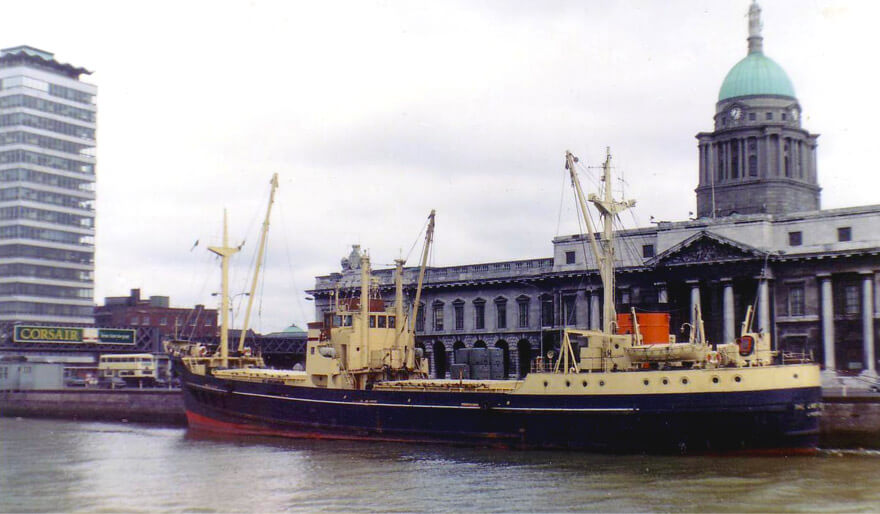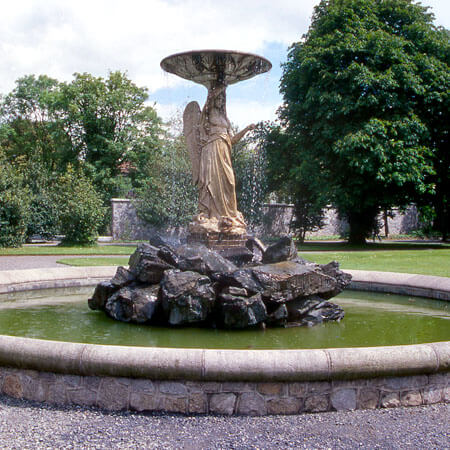Guinness has long been part of Dublin’s history and it’s not just the drinking of the black stuff that we’re talking about either.
There’s all the industry and activity that surrounds its brewing and its distribution too – and all the memories that are associated with them. Up to 1961, for instance, the barges transporting wooden casks of Guinness along the Liffey would have been a familiar sight.
In those days, of course, the Liffey did more than just divide the city in two. It was a major thoroughfare as well. There were six Guinness barges, each named after a Dublin suburban locality: Castleknock, Killiney, Sandyford, Howth, Clonsilla and Seapoint. The bargemen had to avoid sailing during the hours on either side of high tide if they were to fit under the river’s low bridges. Barges carried the beer from the brewery at James’s Gate to waiting ships at the docks. The Royal and Grand canals were used to transport Guinness into the heart of the country.

View of workers in a Guinness barge heading towards O’Donovan Rossa Bridge – © Guinness
The Guinness Fleet of ships in Dublin, better known as the Guinness ladies (1952 – 1993) was made up of three ships – the Lady Grania, Lady Patricia and Lady Gwendolen – each named after a member of the Guinness family. Later, the fleet was joined by the Miranda Guinness, another beautiful name for a ship. The fleet shipped Guinness in bulk from Dublin to the English ports of Liverpool, Manchester and London. From those ports, Guinness was supplied to the rest of the British market and bottled for export to other countries. The men that were employed by the company to work on the fleet became known as Dublin’s ‘Cross Channel Gangs’, and the Guinness ships became a familiar and popular sight in Dublin Port.




